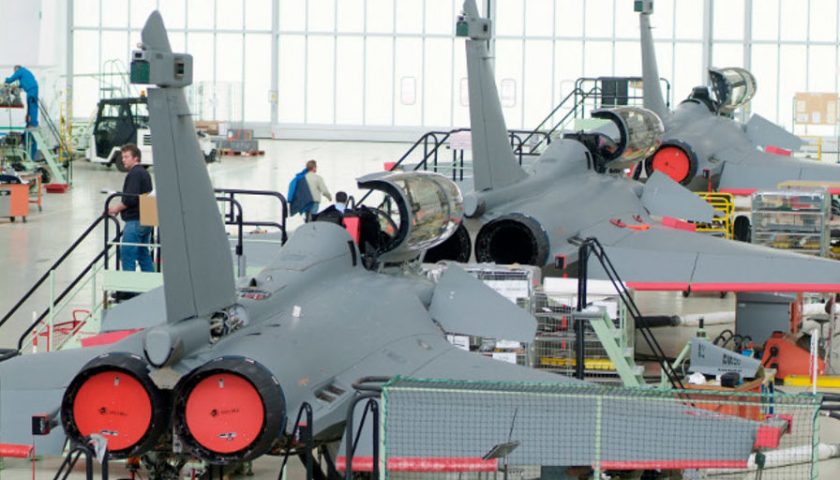The Indian Aeronautical Development Agency, integrated into the DRDO, the La Défense equipment department, surprised many people by announcing that it was abandoning the acquisition of the naval version of the local Tejas Mk2 single-engine light fighter, and of replace it with a new onboard fighter of local design and twin-engine, which will have to make its first flight in 2026. This decision was taken in consultation with the Indian Navy, which does not wish to use a single-engine onboard fighter deemed unsuitable (rightly), to replace its Mig29K from 2030.
For any experienced aircraft manufacturer, developing a modern combat aircraft in 5 or 6 years is a difficult task, but not impossible. However, regarding the Indian Defense industry, this deadline seems overly optimistic. Indeed, it only designed, in all and everything, the Tejas light fighter and its Mk2 version independently, and the device, according to many criteria, is far from being a success. Furthermore, even for experienced industries, such as Russian or Chinese industry, the design of an onboard fighter is a real challenge. Just notice the attrition of Russian Su33s and Chinese J15s to convince yourself of this. Moreover, it is not a question, as was the case of the Tejas Mk2 which had nevertheless succeeded a few weeks ago in its first takeoffs on a springboard and landings on a simulated deck, of starting from an existing common platform to derive a naval version, but to design a completely new device, with all the difficulties that this entails. Even if the process of “navalizing” an existing device has rarely given good results, it is still a less arduous task than designing an entirely new device.

According to the AdA, the Indian aircraft must be designed, like the Mig29K, to operate from the STOBAR aircraft carriers of the Indian Navy, and not CATOBAR aircraft carriers, i.e. equipped with catapults. To achieve this, it must be able to develop a significant thrust/weight ratio, excluding, in fact, the possibility of using a local engine. We can think that the new aircraft could receive General Electric's F414 turbojet engine which powers the Super Hornet and the Tejas Mk2, like the Indian Air Force's AMCA heavy fighter program, which also plans to 'use this engine.
The fact remains that nothing has yet been decided, and this decision could open up real opportunities for the European aeronautical industry, and particularly for the French industry. Indeed, one of the advantages of the Super Hornet compared to the Rafale in the competition relating to the acquisition of 57 combat aircraft by New Delhi, focused precisely on the use of the same engine as that chosen by the naval Tejas Mk2, the F414. By redistributing the cards, the DRDO therefore opens an opportunity for Safran and its M88 reactor which equips the Rafale, in order to position itself to equip the new device, and for the consortium Rafale to support the Indian design approach, benefiting in the process froma possible new “Make in India” order from the Air Force, and therefore significant savings in time and money for Indian public administration and finances. By positioning the M88 as an alternative to the F414, the group Rafale would make it possible to strengthen its offer against Boeing, and to propose a real optimization of on-board maintenance and aircraft regeneration infrastructures on Indian aircraft carriers, opening the way to other collaborations, such as at the level of Radar, the Defense, weapons…

On the other hand, it is a new blow for the Tejas, and the Tejas Mk2, which are definitely struggling to convince, even in its own country. The Light Combat Aircraft (LCA) Tejas (Glorious in Sanskrit) program was launched in 1990, and the first flight took place in 2001. But it took 14 years to see the aircraft enter service with the Indian Air Force, in 2015. Light single-jet engine with a maximum take-off mass of 8 tonnes, it is powered by General Electric's F404 turbojet, which equips the F/A 18 Hornet, offering 5,6 tonnes of dry thrust, and 8,5 .XNUMX tons with post-combustion.
Despite an imposing development budget, and a unit price estimated at more than €55 million, more expensive than a much more efficient JAS 39 Gripen E/F, the Tejas' performances are disappointing, in all areas, ranging from speed (max Mac 1,6) with a range of less than 550 km, and a limited carrying capacity. The IAF was to acquire 260 initially, but this figure was quickly reduced to 83, with the assurance of being able to bring them up to Mk2 standard at a later date. The Mk2 corrects some major flaws of the Mk1, with a more powerful F414 engine, greater fuel capacity, and higher performance, although without matching that of aircraft like the Gripen or the F16, and probably the Chinese J10C or the FH17 Pakistani.
